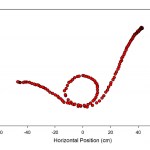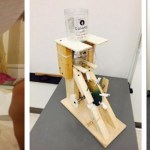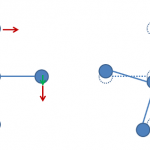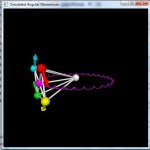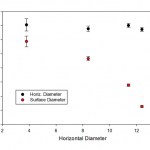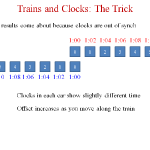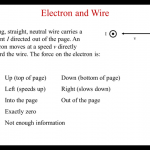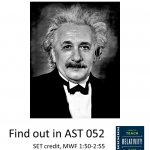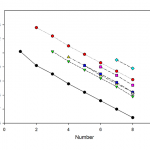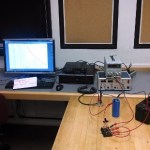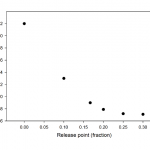I'm teaching introductory mechanics for the umpteenth time, using the Matter and Interactions curriculum, as we have for a while. This is going to be my last time teaching out of M&I, though, because last year the department decided to switch to a different book. Starting this winter term, we'll be using Halliday, Resnick and Walker.
My physics blogging over at Forbes tends toward the contemplative anyway, for a variety of reasons, but knowing that this is the last time through M&I has had me thinking even more along those lines. Thus, recent posts on really simple physics and what it…
Course Reports
It's one of those days where none of the stuff I probably ought to be writing seems even slightly appealing, so instead I'm going to do something frivolous and morale-boosting, namely think out loud about an imaginary course. Despite being on sabbatical, I do still check my work email, and have caught the edges of a new round of arguments about whether we're providing enough "Gen Ed" science courses pitched at non-majors. The hardest part of this is always meeting the "science with lab" component, because those courses are pretty resource-instensive, and we have a limited set of them that we…
I've been pretty quiet about educational matters of late, for the simple reason that I was too busy teaching to say much. The dust having settled a bit, though, I thought I would put some notes here about what I did this past term, and what worked.
I had two sections of the introductory Newtonian mechanics course in the Spring term; this was off the normal sequence for engineering majors (the engineers mostly take this in the Winter term of their first year), but this year we had yet another larger-than-expected engineering class, and needed to open another section. I picked up both of these…
One of the highlights of teaching introductory mechanics is always the "karate board" lab, which I start off by punching through a wooden board. That gets the class's attention, and then we have them hang weights on boards and measure the deflection in response to a known force. This confirms that the board behaves like a spring, and you can analyze the breaking in terms of energy, estimating the energy stored in the board, and the speed a fist must have to punch through the board. As a sort of empirical test, we can drop a half-kilogram mass from the appropriate height to match the…
One of the points I make repeatedly in teaching introductory mechanics (as I'm doing this term) is that absolutely every problem students encounter can, in principle, be solved using just Newton's Laws or, in the terminology used by Matter and Interactions, the Momentum Principle. You don't strictly need any of the other stuff we talk about, like energy or angular momentum.
Of course, just because you can solve any problem using the Momentum Principle doesn't mean that you want to solve those problems that way. As an example of a problem that's really annoying to solve with just the Momentum…
A few years ago, I taught one of our "SRS" classes, which are supposed to introduce students to research at the college level-- I blogged about it while the course was in progress. I taught it again in the recently-concluded Winter term, but didn't blog much about it because I was mostly doing the same stuff as last time. I did re-adjust the content a little, as I've changed some things about the way I like to present stuff since 2012, but they were mostly cosmetic tweaks, with one big exception.
In the previous round, I went with the base course description, which just specifies that…
Yesterday's post about VPython simulation of the famous bicycle wheel demo showed that you can get the precession and nutation from a simulation that only includes forces. But this is still kind of mysterious, from the standpoint of basic physics intuition. Specifically, it's sort of hard to see how any of this produces a force up and to the left, as required for the precession to happen.
I spent a bunch of time last night drawing pictures and writing equations, and I think I have the start of an explanation. It all comes down to the picture of rigid objects as really stiff springs-- the grey…
The third of the great physics principles introduced in our introductory mechanics courses is the conservation of angular momentum, or the Angular Momentum Principle in the language of the Matter and Interactions curriculum we use. This tends to be one of the hardest topics to introduce, in no small part because it's the last thing introduced and we're usually really short on time, but also because it's really weird. Angular momentum is very different than linear momentum, and involves all sorts of vector products and things going off at right angles.
This leads to some of the coolest demos…
I'm teaching my "Brief History of Timekeeping" class again this term, and as always, I'm tweaking things a bit. This is one of our "Sophomore Research Seminar" courses, intended to introduce students to academic research, so it's not specifically a physics class, but I'm choosing to take the statements about research outside the student's field at face value, and thus will be requiring them to do final projects involving some empirical measurement of the natural world, that being the essence of scientific research. (Last time, I included that as an option, but nobody took it, so I ended up…
A couple of times last week, I mentioned on Twitter that I was going to demonstrate relativity with toddler toys and string. This was an inspiration that hit late on Thursday, when I was trying to think of a better way to explain embedding diagrams (the technical term for those stretched-rubber-sheet pictures that everybody uses to illustrate general relativity).
Specifically, I was hearing a lot from students who didn't understand the point of what was supposed to be weird about those. So I was trying to think of how to do a demo, when I realized we could measure the change in geometry that…
My Gen Ed relativity course has mostly been me lecturing about stuff to this point, so on Wednesday I decided to shake things up a bit and convert a chapter of David Mermin's It's About Time. The idea was to get students up and moving around a bit, and actually making some measurements of stuff.
Mermin's scenario as adapted for class is this: you have two trains of six cars passing in opposite directions. Each car contains a narrow window through which the other train can be seen, a clock facing the window, and an observer with nothing better to do than note the readings of the clocks in the…
The new academic year starts this week-- first day of classes is Wednesday-- and I'm dealing with the usual chaos associated with the influx of a new class of students. Who now look to me only a tiny bit older than SteelyKid and the Pip in the above picture (and if you think that sharing that extremely cute photo is part of the motivation for this post, well, you're not wrong...).
This year, the madness of the new term is complicated by having been away for essentially all of August, and by the fact that I'm teaching an entirely new class this term: Astronomy 052: Relativity, Black Holes, and…
For the sixteenth episode of Uncertain Dots, we decided to bring in some guests, Andy Rundquist and Kelly O'Shea for a conversation about standards-based grading. This came up because I'm playing around with this using the same tiered scheme I talked about back in January.
This was a fun conversation, and some interesting ideas came up. I remain kind of boggled by the amount of oral exam time Andy puts in, and I find the notion of goal-less problems intriguing, but I'm not sure I could implement it here.
Some links:
Kelly on goal-less problems
Direct Measurement Video
So, anyway, that was…
That recent study on active learning continues to generate some press, including a new interview with Carl Wieman about why traditional lectures are problematic. Wieman is pretty blunt about his opinions on the subject, which will come as no surprise to people in the AMO physics community...
Anyway, while most of the rest of the academic nation is into final exams and even graduation parties, we still have two more weeks of class after this one, and we're giving an exam tonight in my intro E&M class. Which means I'm still spending a lot of time thinking about this stuff. Some related…
Every now and then, I run across a question in class that I genuinely don't know how to answer. If I'm lucky, this happens when I'm prepping a class, rather than when a student asks it live. Like today, when I noticed the above discussion question in my slides (reproduced at the bottom as well for those reading via RSS).
The discussion question itself is perfectly straightforward-- the current in the wire creates a magnetic field, the moving electron interacts with that, and getting the direction of the force is a straightforward right-hand-rule problem. I'll pose this to the class and ask…
This coming fall term, I'll be teaching Astronomy 052, "Relativity, Black Holes, and Quasars," because the guy who has traditionally taught it (a radio astronomer who studies active galactic nuclei) has to do other courses instead. But I said "Well, hell, I've written a popular audience book explaining relativity. I can teach that." And since I get to make teaching assignments (the one and only positive feature of being department chair), well, I put myself down to teach it. Now, of course, I find myself thinking about ideas for that class, months in advance, when I ought to be working on…
We had a couple of weeks of unplanned hiatus due to sick kids and day care closures, so the superstitious among you might've thought we would never get to the 13th episode of Encertain Dots. Rhett and I are scientists, though, so we powered through:
Given the time of year, this is mostly about end-of-academic-year stuff: exams, intro course curricula, and undergrad research. The undergraduate research symposium I mention a few times is the Steinmetz Symposium, a Union tradition that will happen for the 24th time this Friday. This cancels a day of classes, which is a little annoying, but it's…
Last week, we looked at the resistance of a voltage sensor by using the discharge of a capacitor, getting a value that was a bit high, but not wildly out of line with the specs. This time out, we're going to look at the resistance of a current meter, because some students asked about it during Wednesday's exam review session.
The question came up because one of the things I have on the standards for the circuit portion of the class is knowing how to hook up a current meter and a voltage meter in the appropriate ways. This is strangely confusing for a lot of students, which gets annoying, as…
For the latest in our ongoing series of post where I overthink simple questions, I'd like to present the longest single continuous experiment in Uncertain Principles history, which took six and a half hours yesterday. All to answer the question in the post title.
This may seem like a waste, given that I could download a spec sheet, but it was a simple extension of yesterday's lab. I'm teaching E&M this term, and we're wrapping up the circuits portion of the class. Yesterday's lab was about the discharging of capacitors.
This is one of those concepts that sneaks in largely as a way to…
In the previous post about simulating the attraction between sticky tapes using VPython, I ended with a teaser mentioning that there was a discrepancy between the simulation and the theoretical solution from directly solving the equations. The problem is kind of subtle, but clearly visible in this graph from that post:
Data for the toy model version of the system, showing the equilibrium position as a function of initial separation.
In this, we see the equilibrium position that the mass-on-a-spring settles into as a function of the initial separation between the charges in the toy model.…

